9 Best Entry Level Video Cameras for 2020
An entry level video camera is for those who are new to filmmaking or shooting video. Ideally, this camera should be easy to use and come at a price that is well below professional cinema cameras. Plus, you will most likely be looking for the best value for your money, not just simply affordable.
NEW: 9 Best Entry Level Video Cameras for 2021
In the past, consumer and prosumer camcorders were the first choice for entry level filmmakers. Before that, 8mm film cameras were almost the only option available. However, in recent years digital videography using smartphones, DSLRs and mirrorless cameras has brought high quality video production to millions.
But, before you choose your first camera, it’s worth looking more closely at the kind of video a camera will output. While camcorders are dedicated to shooting video, the cameras mentioned here are mostly dual purpose. They’re designed to shoot still photos as well as video clips.
Indeed, as the majority of camera users are looking to shoot more photos than videos, these cameras are often designed more with the photographer than vlogger in mind. However, over recent years this has started to shift more towards a better balance between both stills and video.
Video Output
The camera may output 4K resolution, but the kind of file output makes a difference to what you can do with the video afterwards. For example, the MP4 video file produced by most low budget cameras is a compressed format designed for low bandwidth delivery. These files are usually created using 4:2:0 chroma subsampling, which discards 3/4 of the colour information to reduce file sizes.
And this is one reason why you might want to shoot at 4K resolution, even if you intend to master the video at 1080 HD. If you shoot 4K and “down res” to 1080 HD, your final 1080 HD video should contain more colour information than if simply shot at 1080 HD. Bear in mind, higher video resolutions demand more processing power when editing and grading.
Does the camera produce 8bit or 10bit video? 10bit video contains far more image information than 8bit. However, it will demand greater processing power when editing. Again, higher bitrates produce better quality video at the expense of increased file size and processor demands.
1. A Smartphone
If you’re at the beginner stage of your filmmaking journey, I really recommend using your smartphone to start shooting right away. In the last 3-4 years, smartphones have been used by Oscar-winning directors to shoot feature films. So there can be no denying they are now a legitimate professional filmmaking device.
They are small, flexible, easy to use and (presuming you already have a smartphone made in the last 3 years) entirely free. You will not need to buy lenses, as you would with a DSLR or mirrorless camera. Your smartphone can even be used to edit your video, so no need to spend more on an expensive, high-powered laptop and editing software.
Editing this way is not ideal, but you can get started right away without spending even $1. Becoming a better filmmaker involves learning to frame the image and capture shots which edit together well. This process is virtually identical, whether you use a smartphone or $98,200 worth of Arri Alexa.
In addition, recent smartphones such as the iPhone 11 Pro, Samsung S20 Ultra and the Huawei P40 Pro have larger camera sensors and inbuilt telephoto lenses. Some can even shoot at 8K and allow a certain level of shallow depth of field. All in a device that fits in your jean’s pocket.
Of course, I would say this as I run one of the world’s most popular festivals for films shot on smartphones. But this is why I think you should make a film on your smartphone.
Best Smartphone for Video and Filmmaking2. Sony ZV-1 *NEW*
This great, affordable new camera by Sony is aimed directly at vloggers and YouTubers. The camera shoots fantastic looking 4K video at 24 and 30 frames per second. If you drop down to 1080p resolution you can also shoot 60 and 120 frames per second, which is great for capturing smooth, gliding slowmo shots.
As vloggers are usually filming themselves, there’s a handy flip out screen for easier focus, exposure and framing. There’s also a number of features aimed at vloggers. For example, there’s a special auto focus (“Product Showcase” Setting) for when you want to move a product close to camera and have the focus switch from your face to the product.
The Sony ZV-1 carries a 1″ Exmor RS CMOS sensor with 20.1MP and comes equipped with a 24-70mm f1.8-2.8 equivalent lens. The camera even comes with its own inbuilt ND filter, which will enable you to work in overly bright conditions. While there are plenty of features for vloggers to get excited about, some have complained that the lens is not quite wide enough.
However, for an entry level camera the quality produced at this price is hard to beat. And if you want a camera that’s ready to go out of the box, then this is definitely worth looking at.
Find Sony ZV-1 on AmazonIf you are seriously considering the Sony ZV-1, you might also want to look at the recently released Nikon Z50. It’s a small camera with great performance and impressive specs. The Z50 is great for video and shoots 4K across the full sensor width, rather than cropping it. However, the screen flips down at the bottom which some vloggers have found not ideal. But still, a great new camera worth checking out.
3. Fujifilm X-T3
The Fujifilm X-T3 is a great all round camera which can shoot 4K video at 10bit colour up to 60fps. The camera can also capture the slightly wider (17:9) Cinema 4K format at the same frame rates. While the X-T3 can capture 10-bit video internally, you connect an external recorder to capture video at the higher 4:2:2 chroma subsampling quality.
All this in a camera body which currently costs about the same as the high end flagship smartphones such as the Samsung S20 Ultra. While the camera was released in September 2018, constant firmware updates have steadily improved and refined the X-T3’s performance.
The X-T3 can record up to 400 Mbps bitrate (and bitrate plays an important role on video quality). As a comparison, YouTube recommends 4K video be uploaded at 35–45 Mbps. So the X-T3 gives you plenty of extra bitrate to play with, should you need it.
With the X-T4 recently released, look out for some good prices on this earlier model.
Find Fujifilm X-T3 on Amazon4. PANASONIC LUMIX G7
The Panasonic Lumix G7 can capture video up to 4K resolution (8bit 4:2:0). As I mention above, shooting 4K can be useful even if you intend to master your edit at 1080p. Because that extra colour information can then be retained.
The Lumix G7 is a great all-rounder, being very lightweight, with fantastic usability and a wonderful colour output. Assuming you will output at a lower resolution, shooting at 4K allows you to reframe your shots in post. This is very handy if you didn’t quite get it right on the day.
On the downside, the G7 has no inbuilt stabilisation. But if you choose a lens with inbuilt stabilisation, then no problem. There’s also the option to use a tripod or 3 axis gimbal. Having said that, the G7 also carries a flippy screen which is great for monitoring. And the Cine D colour profile gives you plenty of grading options, too.
Specs-wise, the camera comes with a Four Thirds (17.3 x 13 mm) sized CMOS sensor, 3-inch Free-Angle display (flippy screen), shoot from ISO 100-25,600, has ultra-high-speed AF, 8fps continuous shooting, Wi-Fi connectivity and an inbuilt OLED electronic viewfinder.
Find Panasonic Lumix G7 on Amazon5. PANASONIC LUMIX G85 (G80, Europe)
The Panasonic Lumix G85 is one of the best entry level cameras for filmmaking. Like the G7, this camera can shoot at 4K (4:2:0 8-bit compression) resolution. However, the G85 also has excellent inbuilt stabilisation. This is known as “in-body image stabilisation” (IBIS).
The advantages of IBIS become apparent with the increase in filmmaking “on the move”. For example, vloggers and YouTubers who want to film themselves walking and talking. However, IBIS also has many advantages for the budding filmmaker, such as pretty smooth pan or tilt shots without need of a tripod.
Note, the Lumix G85 stabilisation works best when combined with ‘dual IS compatible’ Panasonic lenses. However, it will work fine with other lenses too. While the G85 is relatively affordable and easy to use, it’s great for beginners and for more advanced filmmakers. So this is a camera you can get mileage out of while you develop your skills.
The Lumix G85 also includes the Cinelike D colour profile and an excellent autofocus. This is another micro 4/3rds sensor camera so essentially equal to the G7 in that department. So the extra dollars for the G85 are pretty much for the smooth stabilisation.
Find PANASONIC LUMIX G85 (G80, UK) on Amazon6. Canon EOS M50
There’s a camera in there somewhere! The image above shows the Canon M50 with a bunch of extra kit attached. In fact, the Canon M50 (minus the kit) is rather small and lightweight. The camera can shoot in 4K video (4:2:0 8-bit), there’s also 1080p at 60 frames per second (fps). There’s dual pixel autofocus and the camera even goes up to 120 fps at 720p.
The low weight and flippy screen combo makes the M50 a great choice for YouTubers and Vloggers. The fact the M50 outputs .mp4 files directly means its pretty easy to drop these files right into your editing software and start cutting. On the downside, the 4K video isn’t the best quality, especially as the system crops the image further than with 1080p. Plus, the inbuilt stabilisation and autofocus perform less well at 4K.
Well, stabilising 4K video is always a challenge for any entry level camera. This is because 1) extra processing power is needed and 2) its harder for a camera system to shift a 4K image around the sensor than a lower resolution one.
Anyway, the price of the camera is very attractive to entry level filmmakers. The Canon colour science is very popular. And added to that, the 1080p video works very well with inbuilt stabilisation and autofocus, too. There’s also a 3.5mm jack audio input for attaching your external microphone.
Find Canon EOS M50 on Amazon7. Panasonic FZ2500 (FZ2000, Europe)
The FZ2500 camera comes with numerous advanced video features borrowed from Panasonic’s GH4 and offers 4K video recording at 30 frames per second. As with the previous Panasonics in this list, the FZ2500 comes with the CINELIKE D and CINELIKE V colour profiles. In addition, this model comes with inbuilt ND filters, which you can switch on and off. This is useful for outdoor filming where bright light can cause problems achieving a slow shutter speed.
The Panasonic FZ2500 has a 24-480mm equivalent lens (8.8 – 176mm actual focal length) giving you a 20x optical zoom. There’s also a good old flippy screen for versatile monitoring. The camera has some fun features such as time-lapse video and Dolly Zoom, created by internal software. Meanwhile, the FZ2500’s autofocus is fast and accurate.
Specs include a 3.5mm headphone jack, 30fps 4K UHD video recording, a DCI 4K (4096 x 2160) recording option, and even 10-bit 4:2:2 video output via the HDMI. In addition, the camera has very good inbuilt stabilisation.
Find Panasonic FZ2500 (FZ2000, Europe) on Amazon8. Sony Alpha a6400
The Sony a6 range of cameras are ideal for YouTubers, vloggers and independent content creators. The most recent addition to the model is the a6600 but for entry level video shooters, the older and cheaper a6400 is a better bet.
The a6400 can capture 4K video (4:2:0 8-bit) at 30fps in the XAVCS format at bitrates up to 100Mbps. Full HD video can be shot at up to 120fps at the same bitrate. Like with the FZ2500, there’s an HDMI output to external recorders via a HDMI port.
The Sony a6400 is a favourite partly for its excellent autofocus, which is improved further in the a6600. The a6400 uses eye tracking to keep the subject constantly in focus while they move around the frame.
There’s also Sony’s S-Log2 and S-Log3 gamma modes, with the S-Log3 mode said to offer up to 14EV latitude (dynamic range). The 16:9 flippy screen is also a great ratio for video shooting (not so much for stills).
One downside is the upward flipping flippy screen, which can get obscured by a top-mounted microphone. However, the image above shows a workaround for the issue. Also, the lack of IBIS (inbuilt stabilisation) can be overcome using lenses with stabilisation, using a 3 axis gimbal or other method.
All in all, for an entry level camera, this is great value for money and shoots beautiful video.
Find Sony Alpha a6400 on Amazon9. BLACKMAGIC DESIGN POCKET CINEMA CAMERA 4K
Blackmagic have become the favourite camera maker of student and low budget filmmakers. While their higher spec cameras can set you back $6000 or more, the Pocket Cinema 4K is a fraction of that. So this truly is an entry level Blackmagic camera.
The camera is built around the Micro Four Thirds system and uses a similar sensor to the Panasonic Lumix GH5S. The Pocket Cinema 4K (there’s also a more expensive 6K version) can record 10-bit Apple ProRes and even the highly versatile 12-bit Blackmagic RAW. So you’re getting a much more professional grade file, compared to the 4:2:0 chroma subsampled compressed formats other entry level video cameras use.
To deal with the resulting larger file sizes, you have the option to record directly to an external solid-state drive (SSD) over USB 3. But this camera is definitely aimed at filmmakers and does not provide the convenience you might desire as a vlogger or YouTuber. For example, not great autofocus, no tracking autofocus, no in-camera stabilisation and a battery that only lasts 30 minutes.
Bear in mind that most high performing cinema cameras generally start at $15K. So this is certainly a camera more aimed at those filming with at least a small crew rather than solo shooters. Plus, most users add considerable amounts of extra kit to get things working the way they want.
But if you’re considering shooting high level projects, then this could be the entry level camera for you.
Find Blackmagic Pocket Cinema 4K on AmazonSmartphone Video – Beginner to Advanced
If you want to know more about smartphone filmmaking, my book Smartphone Videography – Beginners to Advanced is now available to download for members on Patreon. The book is 170 pages long and covers essential smartphone filmmaking topics:
Things like how to get the perfect exposure, when to use manual control, which codecs to use, HDR, how to use frame rates, lenses, shot types, stabilisation and much more. There’s also my Exploring the Film Look Guide as well as Smartphone Colour Grading.
Members can also access all 5 episodes of our smartphone shot Silent Eye series, with accompanying screenplays and making of podcasts. There’s other materials too and I will be adding more in the future.
If you want to join me there, follow this link.
Simon Horrocks
Simon Horrocks is a screenwriter & filmmaker. His debut feature THIRD CONTACT was shot on a consumer camcorder and premiered at the BFI IMAX in 2013. His shot-on-smartphones sci-fi series SILENT EYE featured on Amazon Prime. He now runs a popular Patreon page which offers online courses for beginners, customised tips and more: www.patreon.com/SilentEye


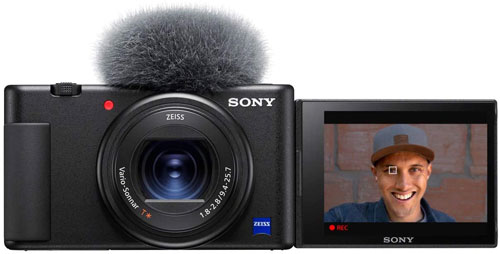
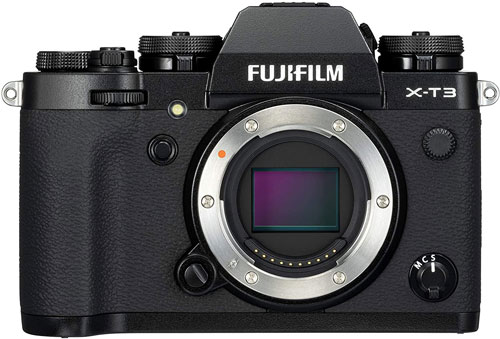
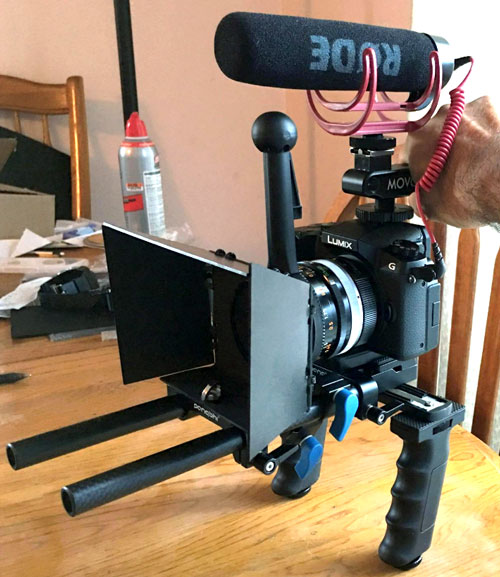
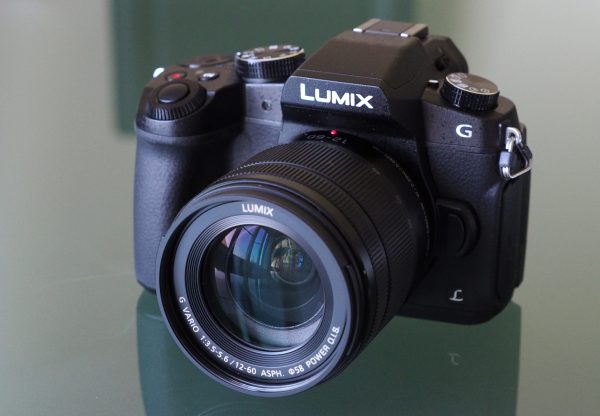
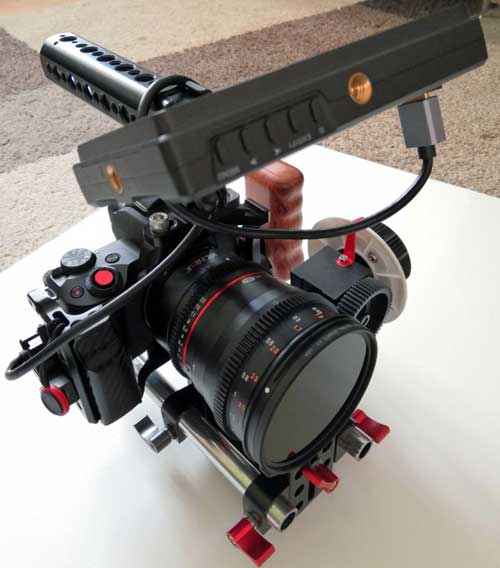

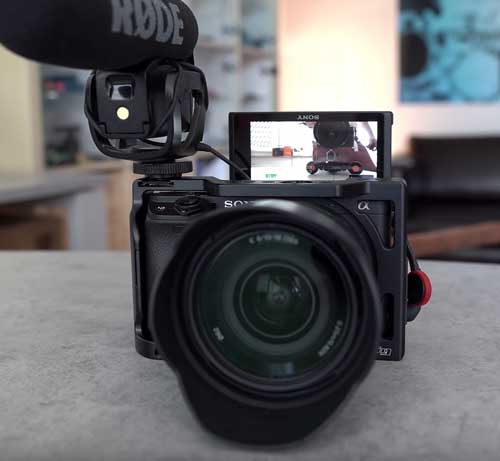
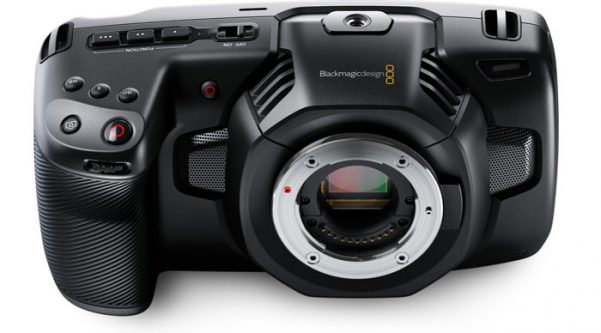

Hi,
you mention “The camera is also capable of ultra-high bitrate video recording at 200 Mbps (ALL-Intra) or 100 Mbps (IPB) without a recording time limit. ”
Are you talking about the R model? I have a GH4 and a GH5s, and found no way to record more than 29 minutes on my GH4 (I own an european model).
The only way to get around the limit is using an external recorder. Am I overseeing something?
Best regards
Jan
hi Jan. You’re right. The European version has a 29 min recording limit.
Hello! I got my Panasonic G7 just last October, and I must say I love what it offers (even without IBIS and weather-sealing). My question is, can a movie shot in UHD 4K or even 1080p be shown in cinemas? I ask because I know that cinema has its own “format”, which is Cinema/DCI/C4K.
You can show pretty much any format in cinemas. You (or the distributors) will need to create a copy in a format usable by cinemas, though. These days that is called a DCP (Digital Cinema Package). These can be created from film (35mm 16mm) masters or digital HD footage. However, distributors have certain quality requirements (usually a huge list) which covers all kinds of things including quality of the image.
For info, I shot a film on a HD (1080p) camcorder which screened in various cinemas including the BFI IMAX in London. But I was self-distributing.
Upwards of six hundred pounds is considered ‘budget’?